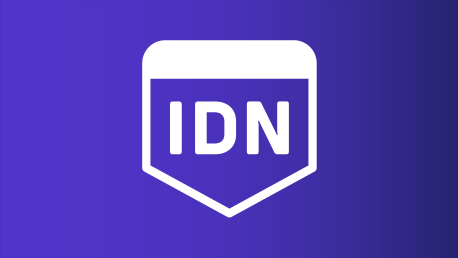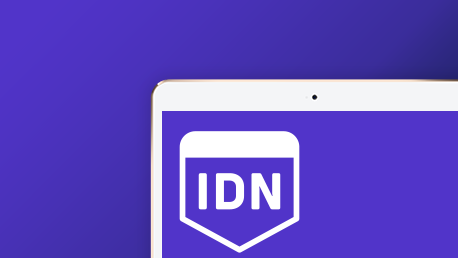SHIFT TECHNOLOGY: INSURANCE PERSPECTIVES
THE SHARED DATA EDITION
From the editor
There are two adages that describe the importance of data to artificial intelligence (AI) and generative AI (GenAI) for insurance. The first, “garbage in, garbage out,” is a well-known phrase that reminds us all that the quality of the input correlates directly to the quality of the output. This clearly applies to AI generally and perhaps even more so to the realm of insurance AI. If AI is going to help insurance professionals do their jobs better, the information and insights it provides must be relevant and accurate, and free of bias and hallucinations. That can only be accomplished if the AI has the richest and most relevant data from which to generate its results.
The second adage, “a rising tide lifts all boats,” was originally coined to describe the impact of an improving economy on its wide-ranging participants. But, we can easily see how it can relate to insurance AI. Insurers do not operate in a vacuum. The trends impacting a single insurer are most likely impacting many others. These may be claims fraud trends. They may be the result of changing legislation or regulations. They may be changes in consumer behavior related to underwriting and claims. They may be macroeconomic issues such as supply chain disruption or the impact of severe weather. The ability to use AI to respond to these challenges is proven. Yet, if your insurance AI initiatives are only powered by your own data, your understanding of these trends may be limited, thus limiting your ability to respond effectively.
In this edition of Insurance Perspectives we examine the role of shared data in an insurance AI strategy, looking primarily at three key models: third-party data aggregators, consortium-based sharing, and cross-carrier data sharing networks. While other models exist, the three selected are best suited to provide the quality data sets required for effective AI strategies supporting the claims and underwriting processes. Of the other models, for example, the concept of open insurance is most often associated with insurance customers consenting to sharing their data to more easily compare products and services across multiple carriers. Data marketplaces, where anonymized data sets are sold and bought by insurers, are typically used to inform insurers’ product development efforts. At this time, these models are less relevant to insurers applying AI/GenAI to the policy and claims lifecycle. As such, we do not discuss them in greater detail.
Third-party data aggregators
Third-party data aggregators can play an important role in getting the most out of AI/GenAI initiatives for insurance. The data sets provided by these well-known vendors and organizations (many of whom are Shift partners) may include claims and underwriting data, vehicle data, government watch lists and sanctions, regulatory and/or business data, as well as other public filings (e.g. criminal and/or civil judgements). When made available to insurance AI/GenAI solutions, data from these sources informs and strengthens the models, providing a more accurate picture of the applicant/ application or claimant/claim. This allows insurers to make better decisions, settle claims more quickly, and deliver exceptional policyholder experiences. These datasets can be applied to AI-powered solutions addressing multiple challenges across the underwriting and claims lifecycles including identifying underwriting risk, claims fraud and subrogation detection, healthcare fraud, waste and abuse, and identifying financial crimes such as money laundering, among many other critical functions.
Third-party data aggregators can also play an important role in the process of entity resolution, a crucial part of the effective use of AI in insurance.
Third-party data aggregators can also play an important role in the process of entity resolution, a crucial part of the effective use of AI in insurance. Entity resolution is the process whereby multiple permutations of an applicant’s or claimant’s Personally Identifying Information (PII) are reconciled to determine if multiple applicants/claimants are in fact the same person. And while an insurer’s internal claims/application data can be useful in this endeavor, the ability to incorporate data from third-party aggregators can significantly increase accuracy. For example, making multiple datasets available that can match phone numbers, addresses, social media accounts, and other information to different presentations of a name (e.g. John A. Smith, Jonathan Smith, J.A. Smith, John Aaron Smith, etc.) found in an insurer’s internal data helps insurers better understand with whom they are doing business and the activities associated with that entity. This in turn can help establish the risk associated with an application or an individual claim. For example, has this individual sought a policy in the past; have they filed a suspicious claim, or one that was determined to be fraudulent; or have they been associated with a proven fraud network? The ability to perform fast and accurate entity resolution can have a significant impact on the bottom line.
Consortium-based sharing
Consortium-based sharing creates an incredible opportunity for participating members to benefit from the collective knowledge of the group. Organizations such as Agence de Lutte contre la Fraude à l’Assurance (ALFA), the Canadian Life and Health Insurance Association (CLHIA), Équité Association, the General Insurance Association of Singapore (GIA), the Hong Kong Federation of Insurers (HKFI), Insurance Fraud Bureau (IFB), and the National Insurance Crime Bureau (NICB), among several others, all have initiatives in place that allow member insurers to benefit from fraud alerts and information about suspected fraudsters and/or fraud networks based on analysis of claims data shared with their respective associations. In the spirit of full disclosure, Shift currently works with many global associations and consortia to support AI-powered fraud fighting initiatives.
Consortium-based sharing benefits members by providing an industry wide view of the trends impacting individual insurers which may be difficult to identify when looking only at their own data. This is especially true when speaking of organized fraud networks and provider fraud. Where singular, or disconnected, incidents can slip by even the most experienced claims professionals or investigators, an alert from the insurance association to which you belong indicating that a suspicious claimant, provider or multiple providers are active in several insurers’ claims processes is a powerful proposition. Consortium-based sharing offers a model for collaboration that benefits the entire insurance industry as well as individual insurers. And although the majority of consortium-based sharing is currently focused on AI-supported fraud detection, there are additional claims and underwriting use cases that could benefit from this model in the future.
Cross-carrier data sharing networks
Cross-carrier data sharing has been supporting global insurers for decades by providing participants with industry wide intelligence that simply cannot be obtained solely through their own data. Upon closer examination however, the result of traditional cross-carrier data sharing more closely resembles the output of the data aggregation model — data sets that must be manually searched, often following the identification of a suspicious claim, to help determine veracity. And while this data has been shown to be valuable and will continue to deliver benefits to insurers, cross-carrier data sharing models are evolving.
Having been introduced in the European market approximately five to seven years ago and most recently in the US through the launch of the Insurance Data Network (IDN), this approach applies automation and delivery of actionable insights to the cross-carrier data sharing model. Participating members receive alerts based on shared industry data that indicate how a claimant’s previous behaviors or actions (or known connections to identified fraud networks or unscrupulous providers) may impact the legitimacy of a claim. Additional insights may relate to exposure associated with claims including BI/PIP. As important, analysis and intelligence provided by cross-carrier data networks can be delivered to participating members in real time, greatly benefiting fraud and risk mitigation strategies.
Conclusion
Cooperation and data sharing amongst individual insurers represents a particularly interesting opportunity to collectively address key challenges to the benefit of the entire industry. And as an increasing number of insurers embrace AI and GenAI to drive efficiency, accuracy and fairness in the claims and underwriting process, coordinated data sharing offers an excellent means of ensuring the models powering these efforts can take advantage of the best and most relevant data available. Each model outlined, working together, can provide insurers with the critical intelligence and insights required to strengthen their position against fraud and risk.


.png)